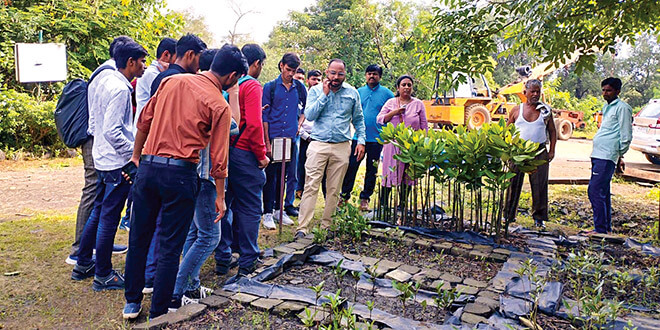
environmental stewardship
Tata Power focuses on leading the transition to a clean and green energy future, making steady progress towards environmental sustainability and a net zero carbon future.
B

B

67

A



Environment

With a dedication to upholding environmental sustainability and legal compliance, we aspire to lead in environmental performance in the power sector. We balance our use of conventional and non-conventional resources to reduce our carbon emissions and nurture an environmentally conscious culture within the organisation.
Our sustainability aspirations
We aspire ‘to be a leader in environmental performance in global power Business’ with the vision of ‘providing clean and green energy and continuing the same for over 100 years’.

Carbon net zero before 2045
- Zero coal-based growth
- Transition away from coal-based generation subject to completion of contractual obligation and useful life
- 100% growth through clean and green capacity
Water neutral by 2030
Zero waste to landfill by 2030
No net loss of biodiversity by 2030
ESG rating improvement
- Inclusion in S&P Global Emerging Market List by 2027
Our approach to environmental management
Environmental stewardship is paramount to us. We established a robust Environmental Management System (EMS) to ensure efficient operations and environmental protection. We take monthly updates of our Environmental Compliance Index (ECI) to ensure legal adherence and prompt corrective actions. Additionally, we utilise the Environmental Performance Index (EPI) to track and improve our environmental performance. Through these measures, we promote sustainability, reduce our environmental footprint, and remain committed to environmental preservation. EMS is verified through international standards e.g. ISO 14001, JIS Q 14001, EMAS.
Environmental Management Framework
- Clearances and compliances
- Setting up EMS
- Capacity enhancement
- Environment audits and advocacy
- Scientific studies
- Business development (A&M) – EDD
- Finance (International Funding agencies) – IR report
- Engineering – Technology selection, specification
- Legal and advisory – Technical support
- Sustainability department – Disclosures
- Driving climate change disclosures (CDP, SBTi, etc.)
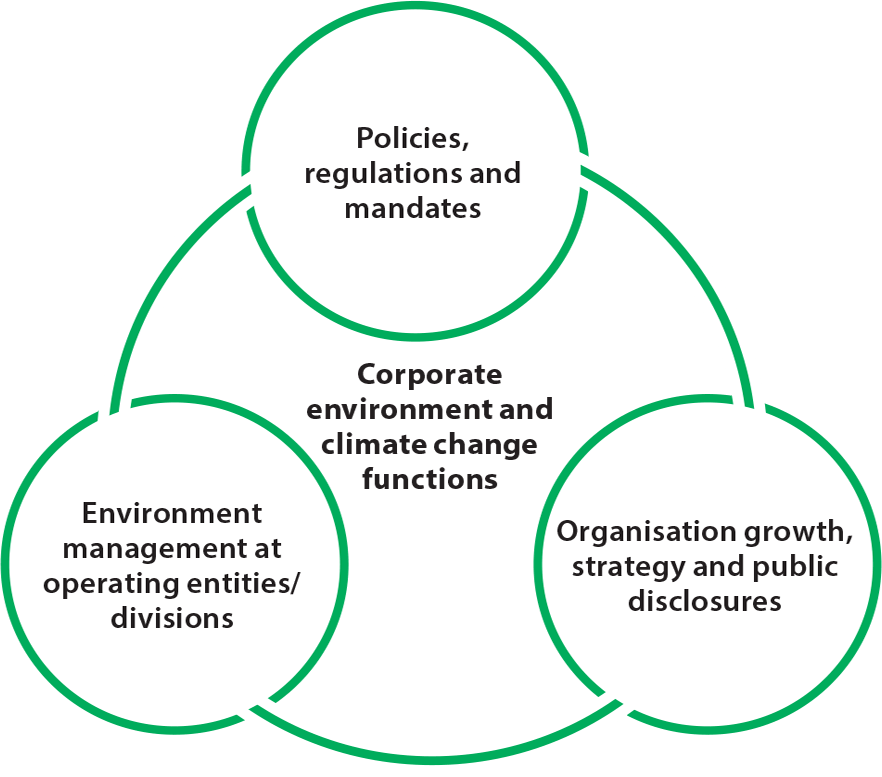
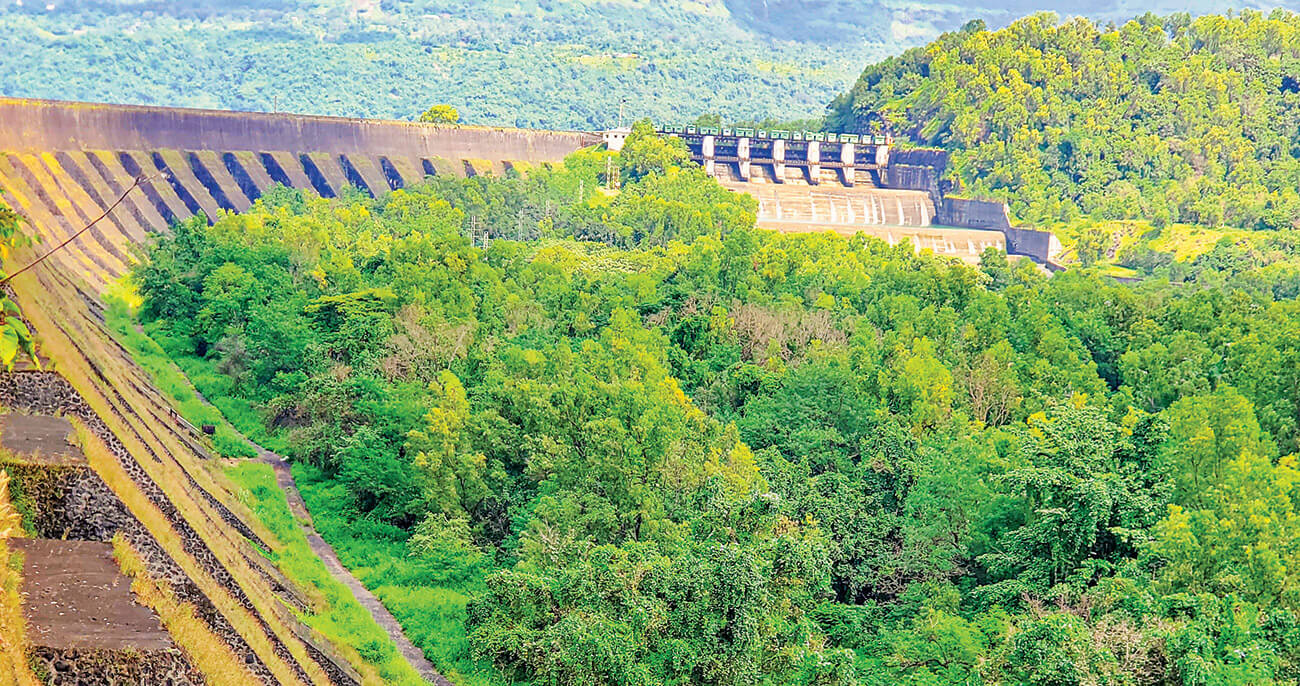
Managing a project across its lifecycle
We base all our projects on principles of environmental compliance, resource optimisation, waste minimisation, and long-term sustainability. For renewable energy projects, we follow a well-defined due diligence process.
Conceptualisation and design are critical stages in any project’s lifecycle. Our commitment to these stages drives project development through meticulous processes, including the implementation of a tailored Environmental Due Diligence (EDD) process for Renewable Energy (RE) Projects. The EDD process rigorously examines factors such as Wildlife Protected Areas, Eco-Sensitive Zones, Faunal Corridors, and Groundwater Status, ensuring comprehensive environmental assessment.
During engineering and construction, strict adherence to regulations ensures compliance throughout the project’s lifespan. We go beyond regulatory requirements by incorporating measures like Advanced Pollution Control (APC) technology and high-standard Waste Processing Equipment, demonstrating proactive environmental stewardship.
Environmental monitoring ensures,
- Regulatory compliance
- Protecting the natural resources in and around its operations
- Proactive management of impacts and avoidance of risks
- Avoid environmental degradation through robust mechanism
- Ascertain the environmental and social risks relevant to the operations
Additionally, we take a proactive stance, anticipating and mitigating potential risks and environmental hazards to minimise them and ensure a safer environment.
OBJECTIVES
- Striving to go beyond regulatory standards, wherever possible
- Improving efficiency, minimising waste, and conserving resource across all operations
- Inculcating sustainability values in employees through sustainability training
- Creating awareness on environmental and sustainability issues through various stakeholder engagements
- Reducing individual carbon footprint through awareness
During project completion, the decommissioning is also carried out in accordance with applicable regulations and procedures as established by the law.
ESG data management system
A state-of-the-art Environmental, Social, and Governance (ESG) Data Management System is nearing completion. Designed to seamlessly collect ESG data from all Tata Power clusters, divisions, and offices, this system will institutionalise ESG data analysis, meeting both internal and external reporting requirements. These include submissions for the Carbon Disclosure Project (CDP), Business Responsibility and Sustainability Reporting (BRSR), and Integrated Reporting (IR).
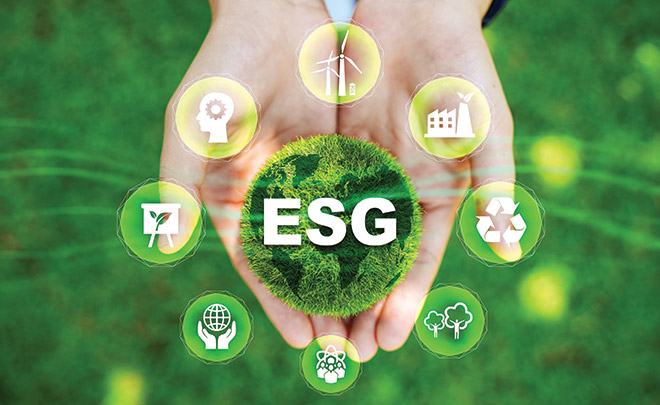
Benefits
Comprehensive ESG data collection for businesswise and location/ plant-wise performance monitoring tailored to stakeholder needs
Standardised reporting capabilities and advanced data analysis tools for informed decision-making and strategic planning
Assessment of Tata Power’s adherence to global and Indian standards, ensuring alignment with sustainability and corporate governance best practices
Peer benchmarking functionality for insights into market trends, performance metrics, and industryleading practices, enabling continuous improvement in environmental and social performance
Achieving carbon net zero
As a leading integrated power utility in India, we aim to lead the global green2 transition. Setting a bold milestone, we strive to achieve carbon neutrality before 2045, becoming the first Indian power utility to commit to this objective. To accomplish this, we harness the synergies of Decarbonisation, Decentralisation, and Digitalisation (3Ds), all contributing to our sustainability goals.
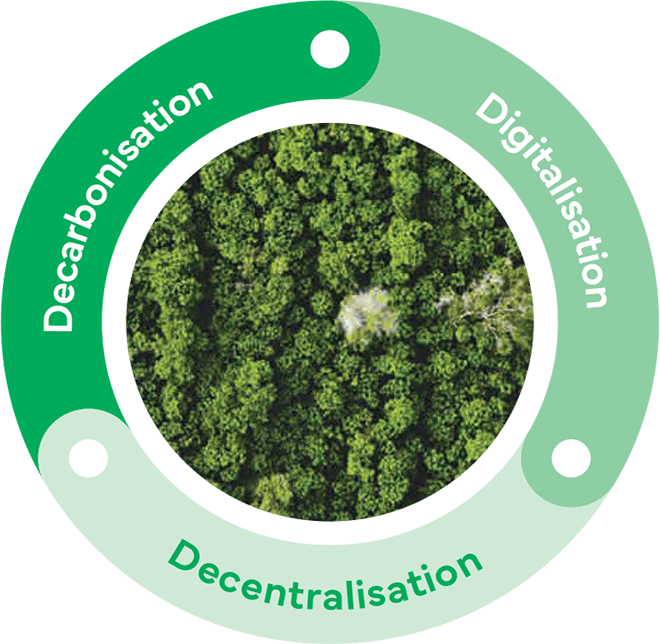
Net zero before 2045: 3D framework
Decarbonisation
Phase out coal-based capacity before 2045 subject to fulfilment of contractual obligations and useful life, while increasing capacity from renewable energy sources.
Digitalisation
Establish energy services (ESCO) for clients, utilising digitalisation for monitoring and achieving cost and energy savings. Utilise advanced technologies such as Reliability-centred Maintenance, SCADA systems, Distributed Energy Resources (DER) integration, smart grids, AI, ML, smart meters, and IoT for operational efficiency.
Decentralisation
Empower communities to generate and utilise solar power and storage, while deploying over 7.5 lakh home chargers and 10,000 EV charging points across India, estimated to save 2 million tonnes in CO2 emissions annually. Additionally, promote rooftop solar, microgrids, and home automation for environmentally conscious consumers.
As a TCFD signatory, we are aligned with its framework to evaluate, mitigate, and leverage climate change-related risks and opportunities. Our long-term strategy includes comprehensive plans to tackle identified risks and integrate contingencies. Through the ScienceBased Targets initiative (SBTi), we are pursuing action plans aligned with its requirements to lead the transition to a low-carbon future and promote sustainable business practices
We received validation from the Science Based Targets initiative (SBTi) for our near-term objectives, establishing us as the sole Indian integrated power entity with validated SBTi targets aligned with well-below 2°C trajectory. Our ambitious goals include a commitment to considerably ‘reduce scope 1 GHG emissions by FY37 from FY22 baseline’ and achieve a reduction in scope 1 and 3 GHG emissions from the generation of all sold electricity within the same timeframe.
Setting medium and long-term goals for ‘Leadership in Sustainability’
- Baselining all operations on their biodiversity impact
- Biodiversity roadmap to achieve net positive impact
- Nature based solutions to preserve biodiversity
- Selective ESG disclosures to prominent raters and indexes based on quality of assessment and actionable outcome
- Adopt structured ESG frameworks with common minimum methodologies/ disclosing sustainability performance for better usability by investors
- Establish an industry leader position for technology adoption with regards to carbon capture, green2 hydrogen, BESS, and storage solutions
Immediate (Y1)
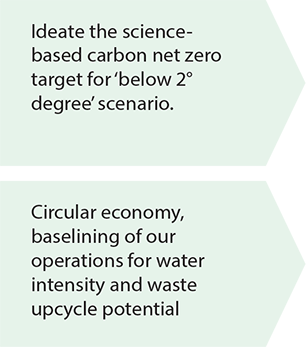
Short term (Y2-5)
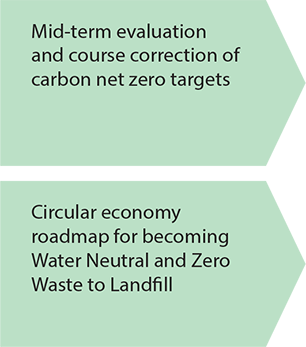
Mid term (Y5+)
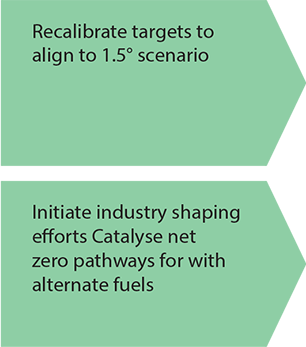
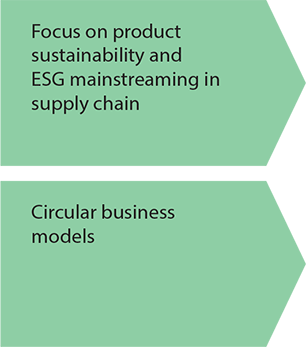
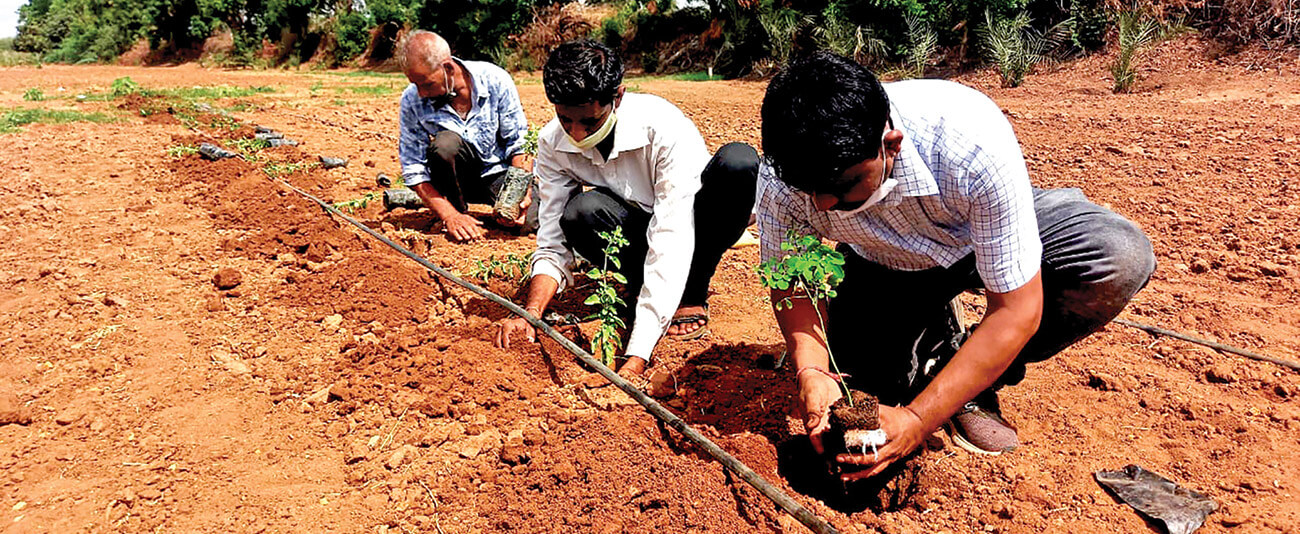
GHG emissions (million tCO2 e)

Increase in each scope is due to following reasons
Scope 1: Increase in thermal generation by 10,000 MUs
Scope 3: Detailed estimations have been carried out in the current year for below categories-
Category 1
Purchase of goods and services
Category 2
Capital goods
Category 3
Fuel and energy-related activities
Category 4
Upstream transportation and distribution
Category 5
Waste generated in operations
Category 6
Business travel
Category 7
Employee commuting
Category 9
Downstream transportation and distribution
Category 11
Use of sold products
Category 12
End-of-life treatment of sold products
Category 14
Franchises
Category 15
Investments
Detailed explanations of Scope 1, 2, and 3 is outline in Decarbonising section of the Integrated Report on the pages 64-65.
Our values prioritise resource conservation, energy efficiency promotion, habitat protection, and local community support in our operational areas. We aim to set new standards in adopting advanced environmentally friendly technologies for efficient energy management.
Green construction with sustainable
At Tata Power, sustainability drives us to pioneer Gold & Platinum IGBC-certified green2 buildings, minimising environmental impact and enhancing occupant well-being through practices like water and energy efficiency. Since 2022, all our GIS constructions have been green2 building certified, with more expected to achieve platinum certification by 2024. We prioritise soil preservation, rainwater harvesting, and efficient plumbing fixtures during construction, and also implement renewable energy systems and eco-friendly materials. Our design phase focuses on universal designs and innovation, including new-age measures like robotic cleaning.
KEY HIGHLIGHTS
- Two of our GIS constructions (110 kV GIS at Dharavi & Vikhroli), completed expediently, have submitted preliminary reports for platinum certification. We anticipate both certifications by early 2024
- The Thermal Power Station, Trombay Station B-O&S building, has received Gold Certification from IGBC
We obtained a long-awaited patent for our pilot project, Plasto Silt Blocks, which utilise Bottom Ash as the main material for construction. This innovative product has been effectively utilised in various applications, including constructing a protection wall for 400m long ash slurry pipeline, a basic training tool room, and a dwarf wall at Mulshi Bhira, among others.
CO2 intensity (tCO2e/MWh)

IEL units, MPL, PPGCL, Solar O&M, Wind O&M and all Discoms have been considered on equity share approach.
*Emissions have been recomputed for FY23 due to detailed estimation carried out for Scope 3 and inclusion of Odisha Discoms.
SOME OF THE KEY FEATURES OF OUR GREEN GIS BUILDINGS AT KURLA AND DHARAVI
Sustainable landscape
- Green Wall
- Grass pavers
- Native species
Optimisation and utilisation of water
- RWH filters
- Efficient plumbing fixture saving 31% of water
- Water meters to monitor usage for flush purpose
Energy efficiency system
- LED lighting fixtures
- HVAC systems
- Energy meter
- Solar panels on roof
- High SRI paint
Ecofriendly material
- Staircase manufactured with recycled material
- AAC blocks used for construction
Green and sustainable design
- Use of Photovoltaic Glass Panel
- Ample amount of daylight and ventilation
- Fresh air ventilation system
Other good practices
- Universal design of ramps, restrooms and parking for especially abled
- Green pro and FSC certificates
Air emissions
In addition to green2house gas emissions, we are mindful of other air pollutants, such as sulphur oxides, nitrogen oxides, and particulate matter, stemming from our operations. To address these pollutants, we have deployed advanced equipment to minimise their release at the source and manage them before discharge. Our strategy includes using technologies like electrostatic precipitators, flue gas desulphurisation systems, and carbon monoxide monitoring devices. Through these measures, we aim to reduce air emissions and promote cleaner air quality.
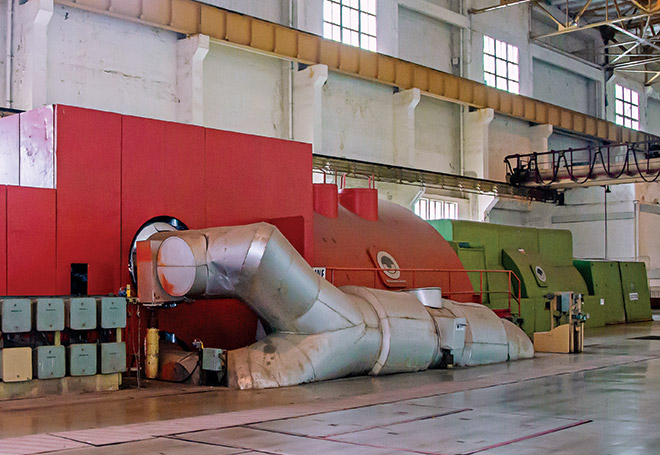
NOx (tonnes)
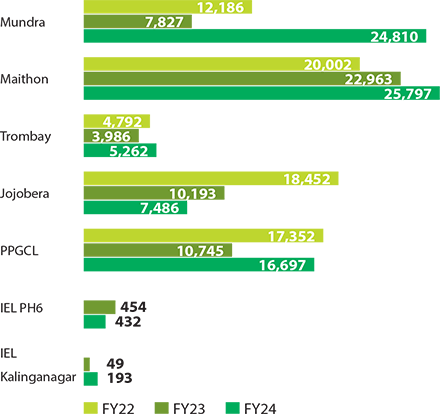
SOx (tonnes)
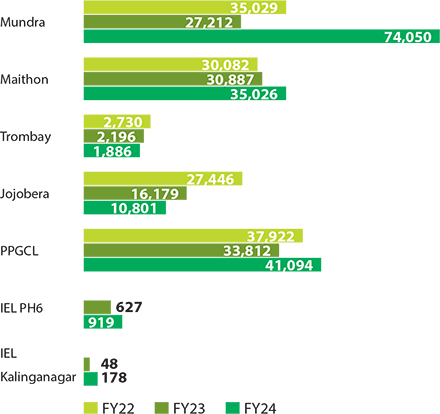
Particulate Matter (PM) (tonnes)
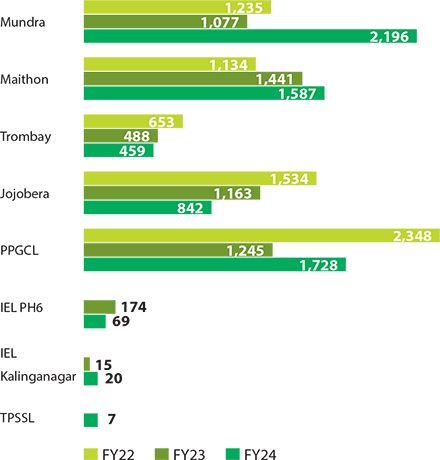
Auxiliary Power Consumption (APC)
To boost energy efficiency, we adopt measures to reduce auxiliary power consumption from our own operating plants. These include minimising the usage of electrical equipment during low-demand periods and switching to energy-efficient lighting solutions. Through these efforts, we aim to optimise our energy usage and promote sustainability in our operations.
Auxiliary Power Consumption (APC) (%)
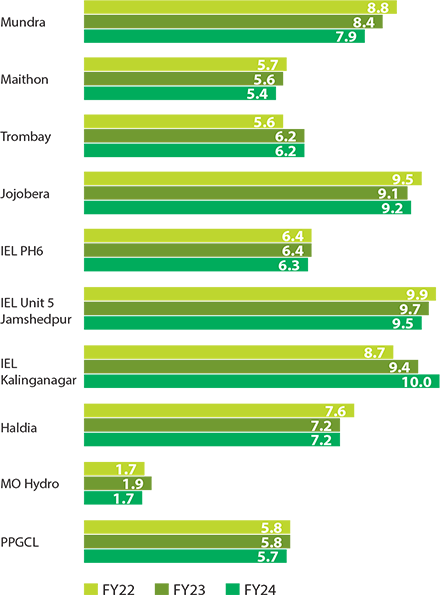
Station Heat Rate (SHR)
We consistently strive to improve the efficiency of our plants and power-generation systems. Our goal is to increase energy output per unit of input material, while also cutting waste, costs, and green2house gas emissions.
Station Heat Rate (SHR) (GJ/kWh)

Water management
Committed to water conservation, we aim for water neutrality by 2030. Our strategies include rainwater harvesting and achieving zero-liquid discharge in most thermal units to reduce water consumption. Additionally, we are working on a plan to utilise treated water, boost recharge capacity, and recycle wastewater for gardening, promoting sustainable water practices.
Approach
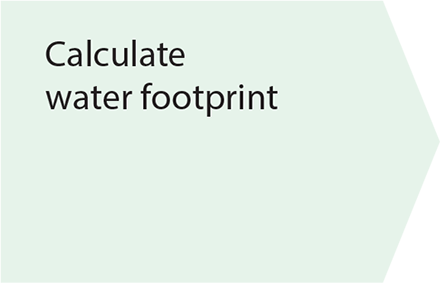
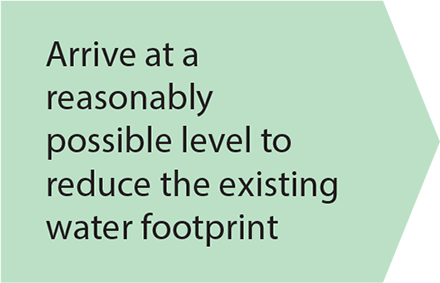
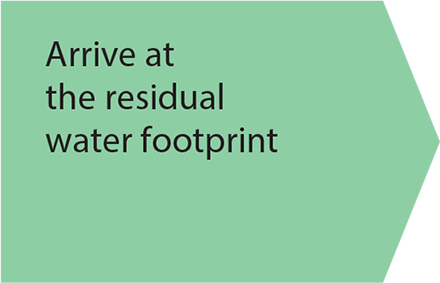
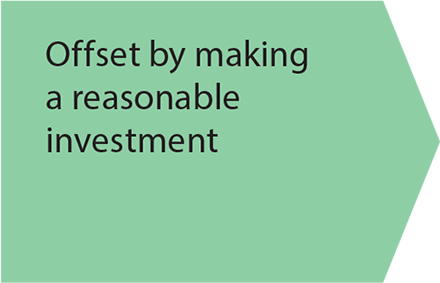
Our long-term initiatives
- Developing a roadmap to minimise freshwater consumption through design engineering and O&M practices
- Maximising water collection, treatment, and usage of treated wastewater
Water withdrawn and consumed by source
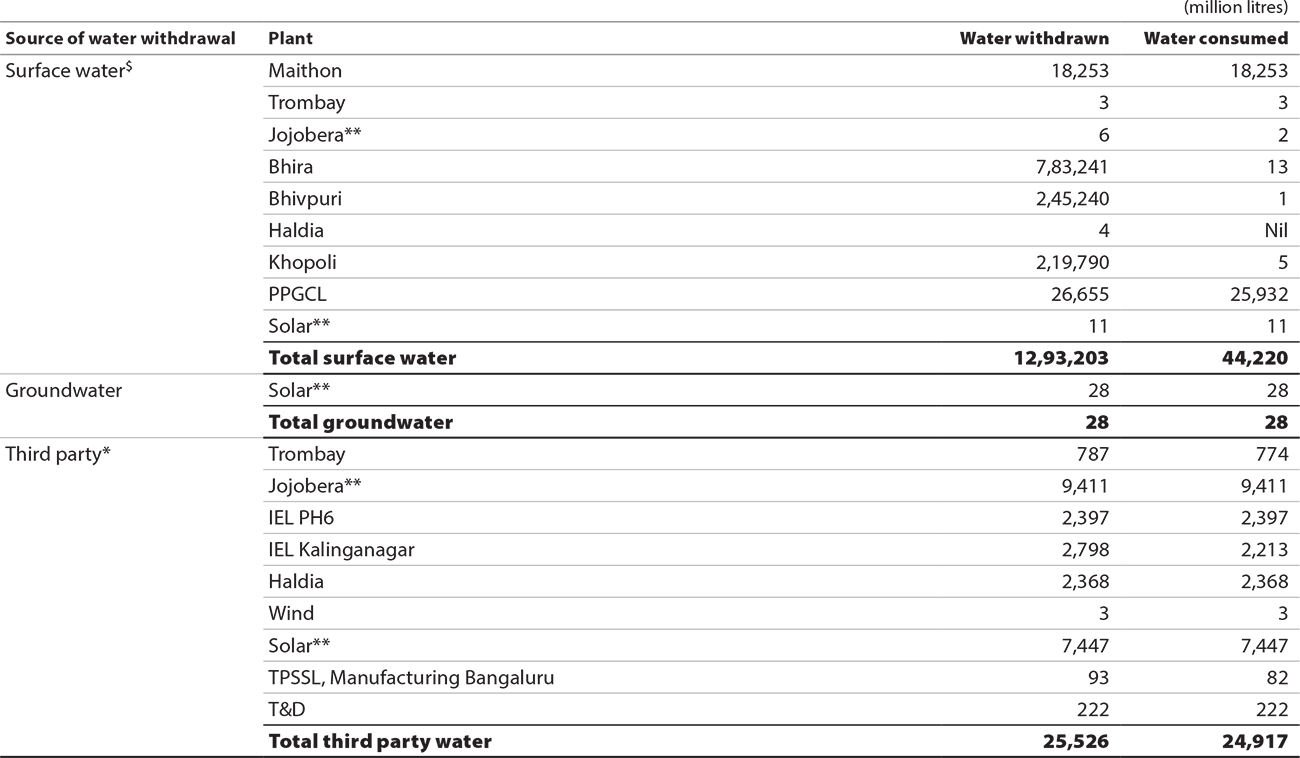
$ Includes rainwater collected and directly stored. Water consumed also includes recycled and treated water
* Third party water data comprises of water purchased from municipal corporation, third party treated effluent (e.g., Tata Steel provides clarified/treated water at IEL Kalinganagar) and packaged drinking water
**Jojobera thermal power plant and some of our solar sites come under the definition of water-stressed areas.
Seawater*

* Seawater is used for cooling only
** Water stress area
Specific water consumption
Our water consumption adheres to Indian Government regulations for coal-fired thermal power generation, set at 3.5 m3/MWh for units commissioned before January 01, 2017, and 3.0 m3/MWh for newer units.
Specific water consumption (m3/MWh)
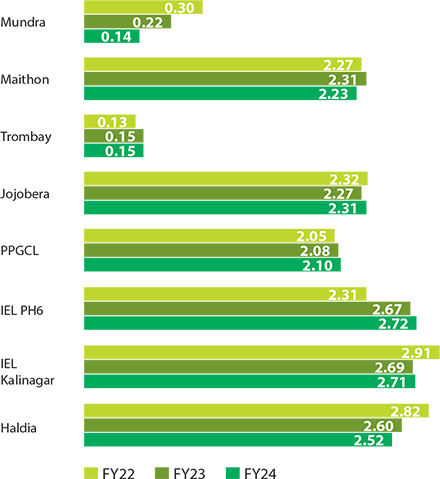
Rainwater harvesting
Aligned with our resource conservation policies, we actively promote Rainwater Harvesting (RWH) across the organisation to enhance efficiency, minimise waste, prevent pollution, and ensure rational water use. This practice involves collecting and storing rainwater rather than allowing it to run off, and directing it to tanks, cisterns, or reservoirs to recharge groundwater. All new GIS facilities at Tata Power are designed to include RWH provisions.
Rainwater recharge in KL

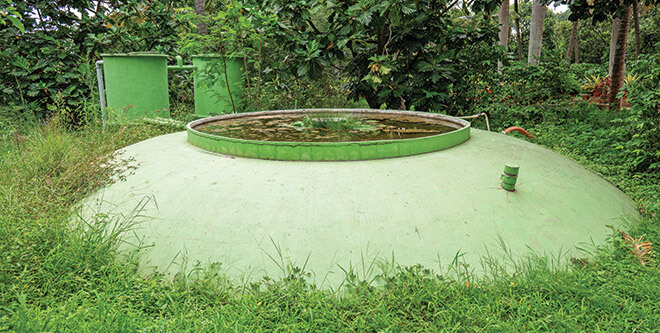
Raw material management
As we transition to green2er sources, we are decreasing our dependence on traditional fuels and materials, reducing both raw material risk and the extraction of finite resources like coal, which is beneficial for the environment.
Raw material consumption in FY24
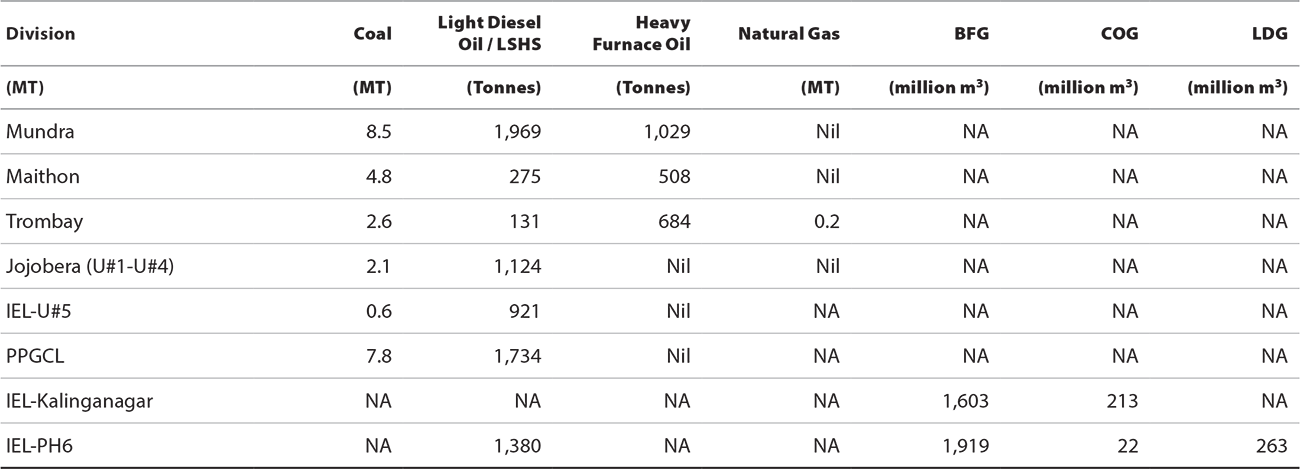
Waste management
We are aligned with our sustainability goal of achieving zero waste to landfill across categories by 2030.

Our long-term initiatives
Circularity of waste utilisation in association with TSG and academic institutes.
Waste diverted from disposal

Mundra, Trombay, Jojobera, Haldia, Bhira, Bhivpuri and Khopoli are operating divisions of The Tata Power Company Limited (TPCL).
Solar and Wind represents divisions and entities under Tata Power Renewable Energy Limited (TPREL).
T&D represents Mumbai T&D divisions of TPCL, TPDDL, TPADL and PTL.
Biodiversity
At Tata Power, we are committed to ‘No Net Loss of Biodiversity’ and have implemented measures for ecosystem and species conservation at all levels. In FY24, we conducted a study with CII-IBBI at 85 renewable locations to develop a No Net Loss to Biodiversity plan. Additionally, we participated in a pilot assessment for the Task Force for Nature-Related Financial Disclosures (TNFD) to identify ecosystem service interdependencies and create a risk plan. Using Geographic Information Systems (GIS) mapping, we scientifically measured and planned actions for flora and fauna in the biodiverse Northwest Sahyadri region. These efforts in FY24 advanced our biodiversity commitments and established a robust framework for monitoring progress.
We also educated our employees on biodiversity preservation through a custom online e-module and onground sessions covering topics like man-animal conflict prevention, mangrove conservation, and indigenous species selection. Employees were encouraged to volunteer for nature walks, plantation drives, creating waterholes, and participating in knowledge sessions with Club Enerji students and citizens.
Books published on the Western Ghats flora and fauna
To promote biodiversity conservation, we published comprehensive books on the conservation efforts of Western Ghats’ flora and fauna.
- ‘Conservation of The Mighty Mahseer of India’: Details efforts to conserve this endangered species and its habitat
- ‘Birds of Lonavala & Khandala’: A pocket guide covering 200 bird species, including endangered and endemic species
- ‘Wild Orchids of Northern Western Ghats’: Describes 99 wild orchid species, including 41 endemics and 44 threatened species, with distribution maps
- ‘Reptiles of Northern Western Ghats’: The first photographic guide documenting 118 reptile species, highlighting their conservation status, habits, and habitats
- ‘Amphibians of Northern Western Ghats’: The first photographic guide covering 52 amphibian species in the region, released in FY23
- ‘Mahseer Conservation: A Saga of Success – Tata Power legacy (1970-2021)’: Chronicles Tata Power’s conservation efforts, with original photos, taxonomy, and species information
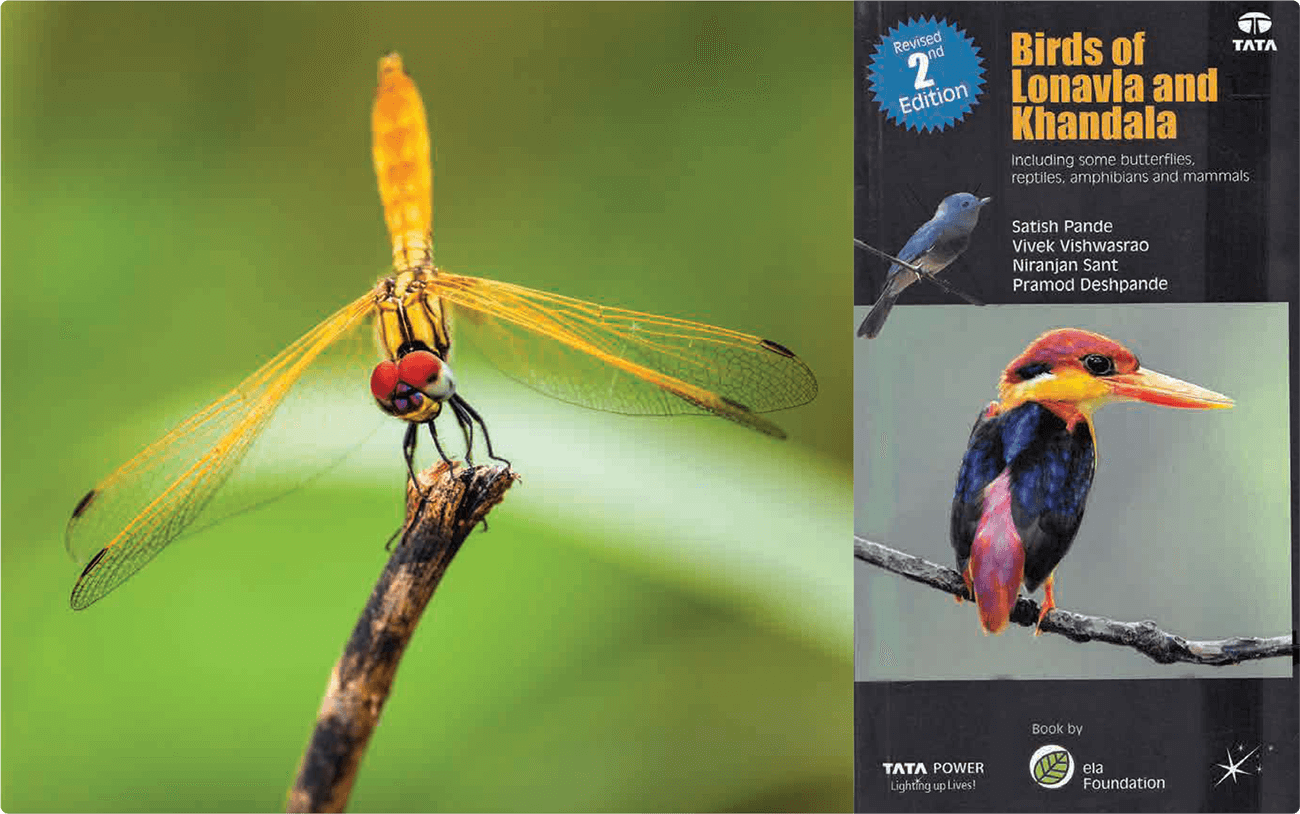

Conserving the majestic Mahseer
Once revered as a holy fish and now threatened with extinction, the majestic Mahseer, known as the ‘Tiger of the Freshwater’, has captivated people with its size and strength. Tata Power has worked closely with the Deccan and Golden Mahseer for over five decades.
Our project includes assessing breeding and reintroducing the humpbacked Mahseer into its natural habitat. Over 50 years, millions of fish seeds have been produced and distributed across India in collaboration with state fishery departments. We have trained 325 fisheries scientists and organised five national workshops to exchange knowledge with international experts, advancing conservation efforts. While the Deccan Mahseer has moved from the IUCN Red List to a Least Concern status due to sustained efforts, the Golden Mahseer remains listed.
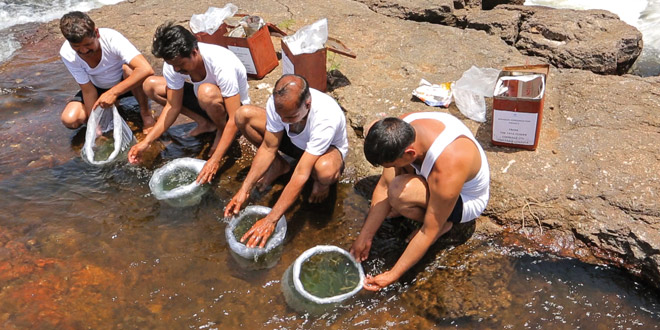
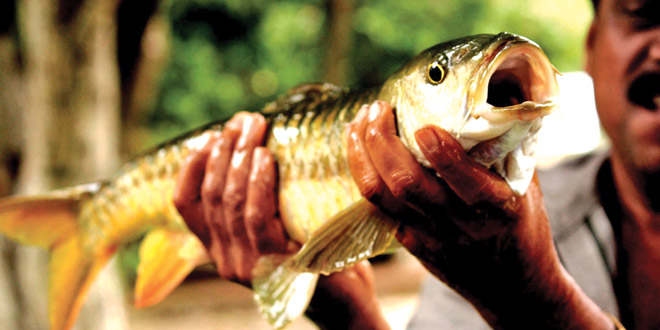
‘Tree Mittra’ initiative
‘Tree Mittra’ serves as our flagship virtual volunteering programme, bringing together individuals, employees, families, customers, and stakeholders to focus on afforestation. Through this initiative, we prioritise native and indigenous tree species to promote environmental consciousness and sustainability.
Since 1979, we have collaborated with Maharashtra’s Forest Department to combat soil erosion caused by human and cattle population growth. Our tree planting initiatives increased green2 cover, attracting various bird and animal species back to the forest. Educational awareness programmes for children, supported by Bharati Vidyapeeth, further contribute to forest conservation efforts.
4.5 million
Trees planted
20 million
Native saplings and seeds planted with a 30% survival rate
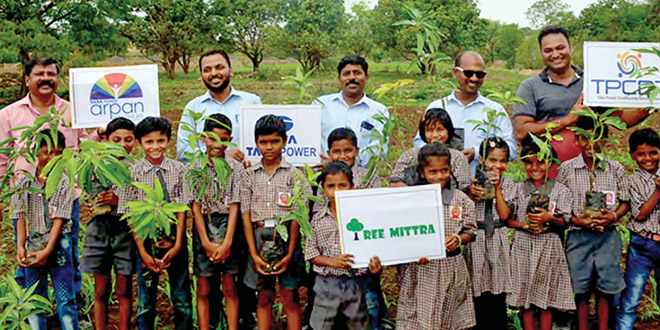
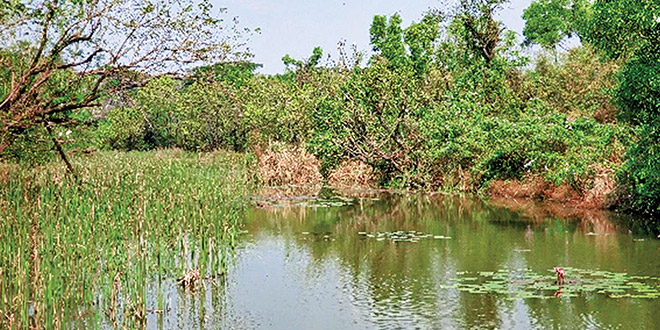
Wetland conservation
Tata Power Hydros has diligently preserved wetlands downstream of the Walwhan Dam and upstream of Lonavala Lake over several decades. This commitment has fostered flourishing aquatic life and attracted diverse bird species, showcasing the positive influence of private sector dedication.
Orchid conservation initiative
We are conserving selected endemic orchid species from the Northern Western Ghats through ex-situ multiplication and reintroduction into the wild. Collaborating with the Agharkar Research Institute, we are micro-propagating endangered orchids like the Foxtail orchid (Rhynchostylis retusa (L.) Blume.) to counter threats of extinction from over-exploitation and habitat loss. Our efforts aim to safeguard these exquisite species and ensure their survival for future generations.
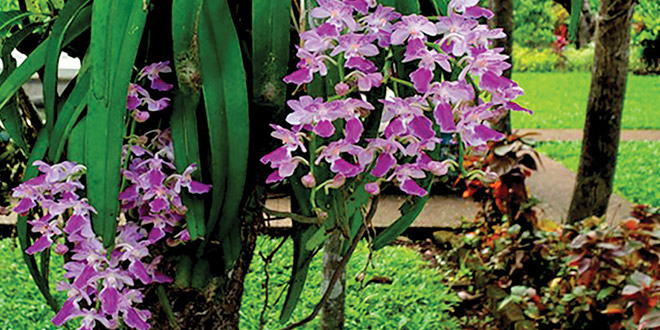
Forest improvement and carbon mapping
In collaboration with the Ela Foundation, we conducted a GIS mapping survey in Maharashtra’s Hydro generation region to assess biodiversity and carbon sequestration potential. This region, adjacent to the Northwestern Biodiversity hotspot, hosts significant biodiversity, as a result of conservation activities carried out for over five decades. The findings of the survey will inform initiatives to enhance forest cover and carbon sequestration, benefiting the local environment and community, and showcasing our commitment to sustainability.
395
Large trees were identified across nine Tata Power sites in the hydro catchment areas
2,260
Tall trees were identified across nine Tata Power sites in the hydro catchment areas
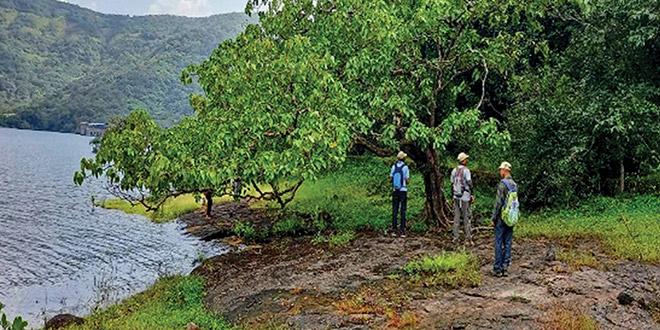
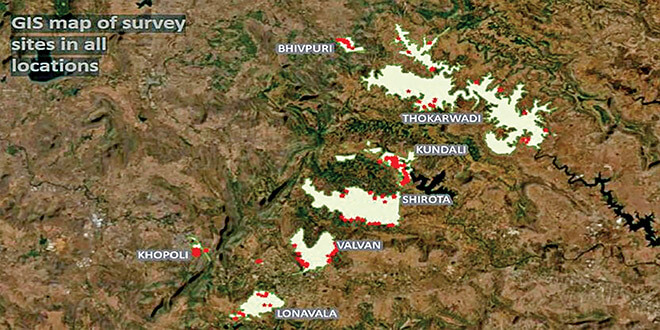
Greenbelt development at Mundra Power Plant
Mundra Power Plant, conducted a Remote Sensing - Geographic Information System (RS-GIS) mapping study with Kutch University to improve the plant’s 453.04 ha greenbelt.
On World Environment Day 2023, Chief Mundra and department heads planted 3,477 indigenous saplings in collaboration with the regional horticulture department. These saplings were protected with fencing and irrigated using ETP treated water.
Green initiatives at Maithon Thermal Power Plant
The Maithon Thermal Power Plant (MPL) in Jharkhand created a 280-acre green2 belt, planting 3.96 lakh saplings till FY24.
Two rainwater harvesting ponds provide year-round water and support marine biodiversity with over 50,000 local fish introduced. The plant organised a study with Ela Foundation that documented 26,250 birds across 153 species, including migratory birds from Asia and Europe. Additionally, 384 natural bird shelters were installed around MPL plantation areas to protect birds and their young ones department. These saplings were protected with fencing and irrigated using ETP treated water.
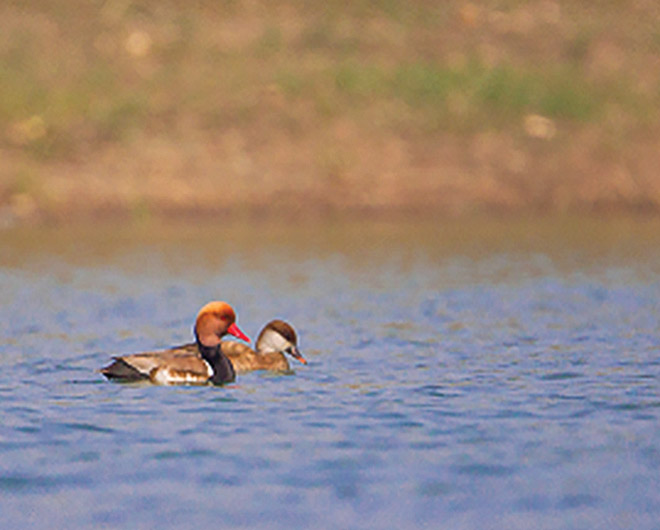
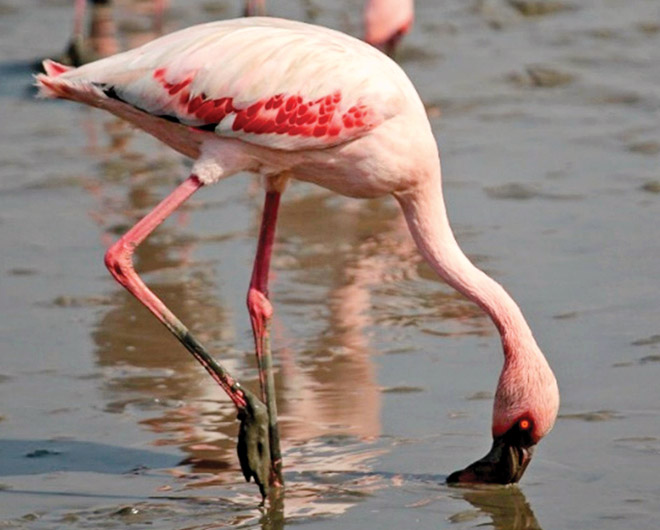
Tata Power’s Trombay bund: a haven for wildlife
Our Trombay Bund area in Mumbai hosts over 10,000 greater and lesser flamingos, providing a protected feeding and roosting site. A butterfly garden with around 30 species thrives in the coal-handling plant. Additionally, an open shelter made from scrap materials at Trombay Jetty offers grains, water, and shade for sparrows and other local birds.
Prayagraj Power Plant has 219 fauna species, including 153 residents, 63 winter migrants, and three summer migrants, in and around the plant and its wetlands.

Watershed initiatives by TPCDT
TPCDT has implemented watershed initiatives in Maharashtra’s wind farm regions like Khandke-Supa, Agaswadi, Jat, and GSW, characterised by low and erratic rainfall.
Our sustainable water management practices, including rainwater harvesting, watershed management, and soil conservation, have improved public health by reducing waterborne diseases in rural areas of Ahmednagar, Satara, and Sangli districts.
5,000+ hectares
Land impacted through water and soil conservation initiatives
16+
Villages were made tanker-free leading to availability of drinking water throughout the year
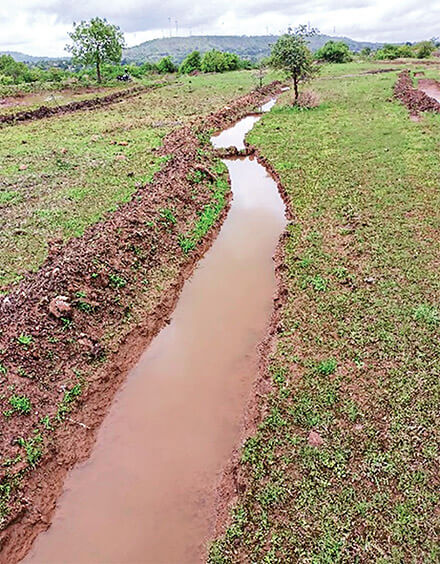
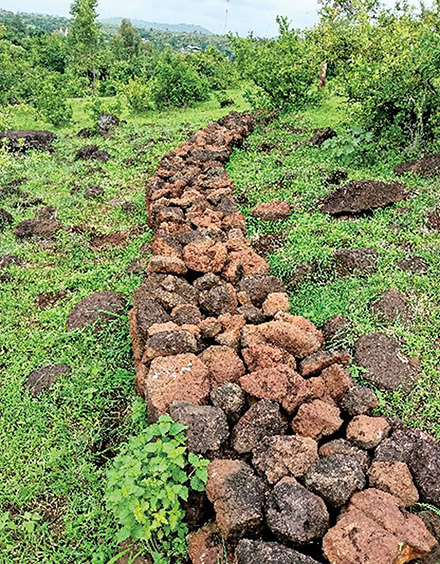
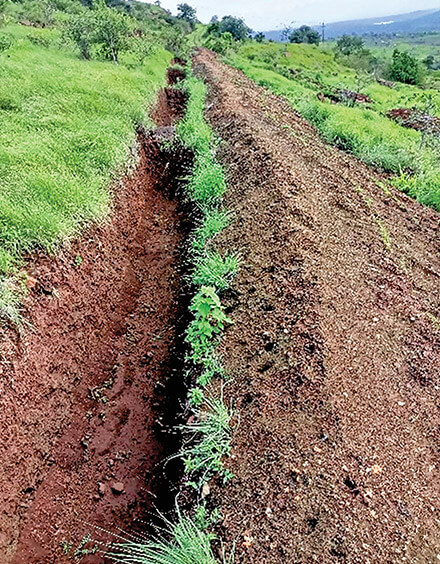
Biodiversity action plan
We developed a biodiversity action plan for our renewable energy sites, including wind sites at Supa, Khandke, and Satara, and solar sites at Akkalkot, Rawra, and Chhayan. Collaborating with interns from Bharti Vidyapeeth, Bandodkar, and Bhavan’s College, we documented local flora and fauna and controlled invasive species to minimise environmental impact.
Elephant conservation corridor in Odisha
In partnership with SNEHA Foundation and the state forest department, we plan to reduce human-elephant conflicts with a comprehensive five year action plan. Measures include installation of early warning systems, vaccination to prevent elephant diseases, and community capacity building.

Grassland conservation at renewable sites
We will manage grassland ecosystems at our renewable sites to maintain ecological balance by adopting a three-pronged approach emphasising on promoting clean energy generation, maintaining ecological balance, and contributing to sustainable livelihoods.
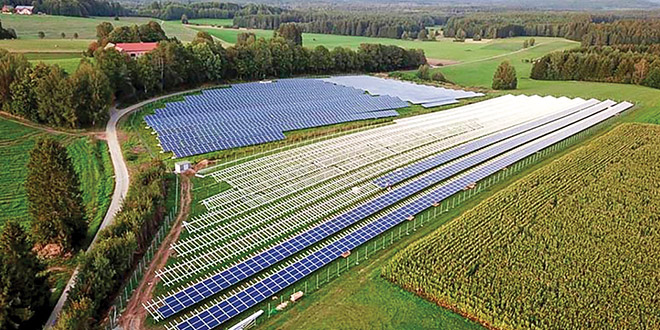
Mass tree plantation at Hydros
Partnering with ICICI Foundation, ‘Project GhanVan’ aims to plant 2.5 lakh indigenous trees over the next three years in the catchment areas of Bhivpuri, Khopoli, and Bhira in Maharashtra’s Western Ghats.
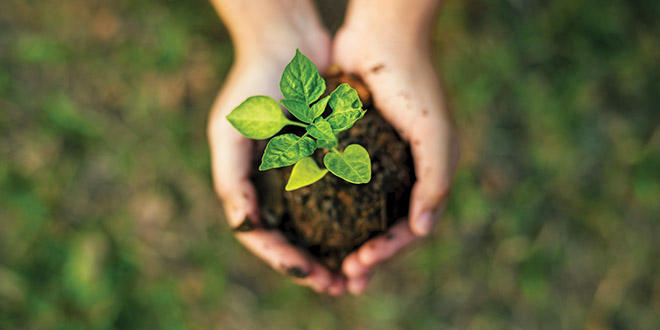
Mangrove conservation
In collaboration with Godrej Boyce Co. Ltd., we conducted a Mangrove Awareness Workshop at the Godrej Mangrove Conservation Centre in Mumbai, focusing on the importance of mangroves, native species, and their medicinal qualities.
